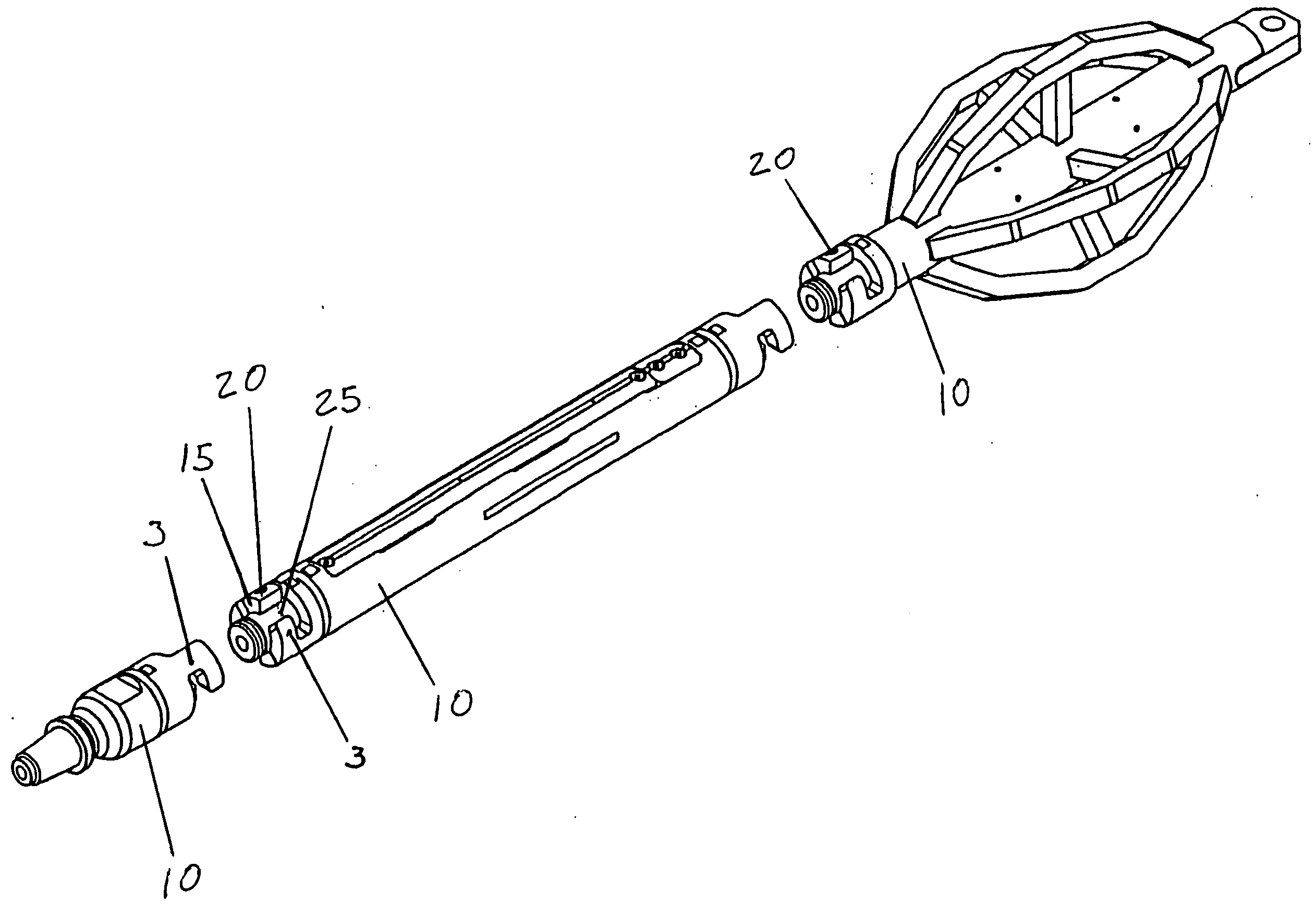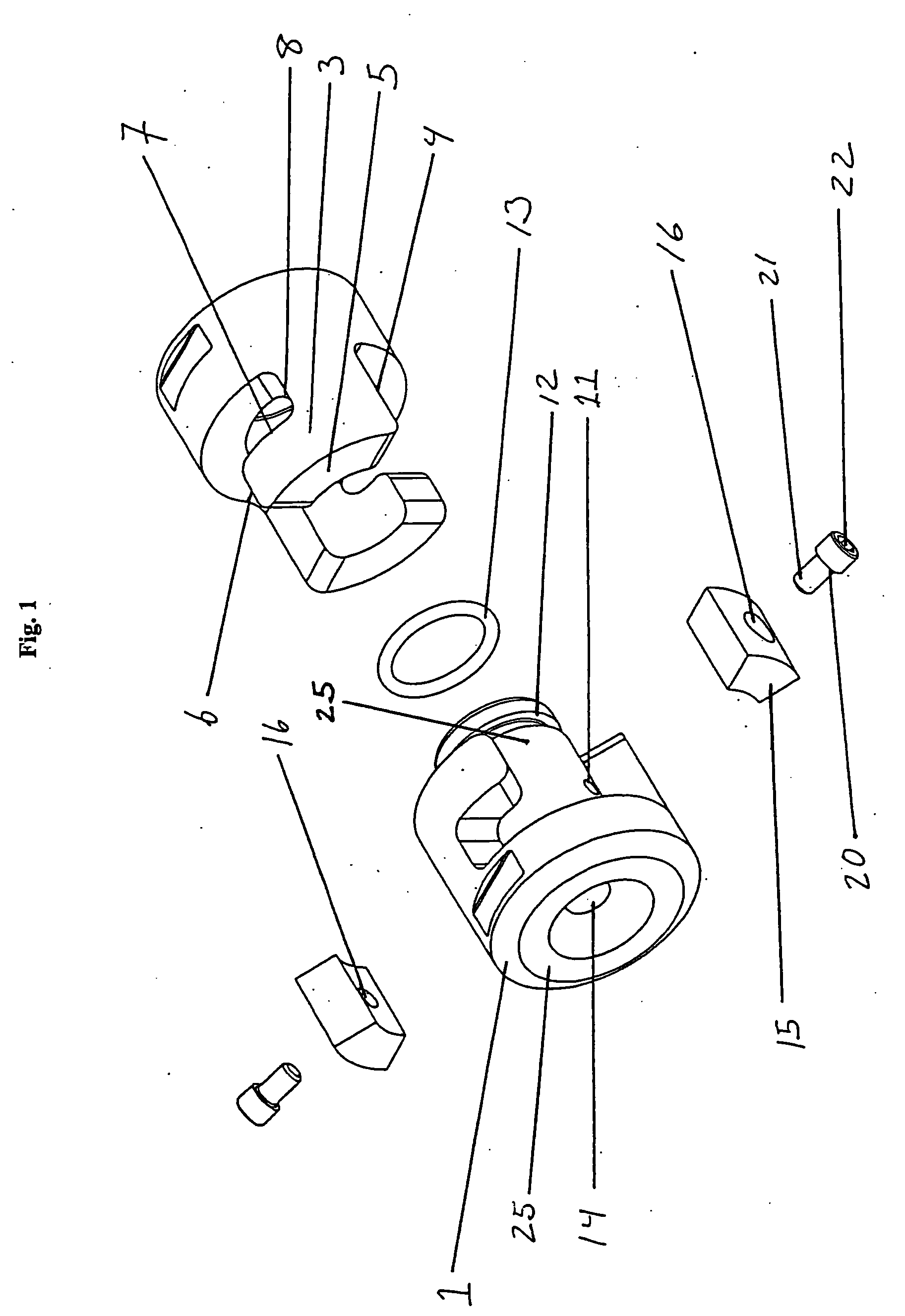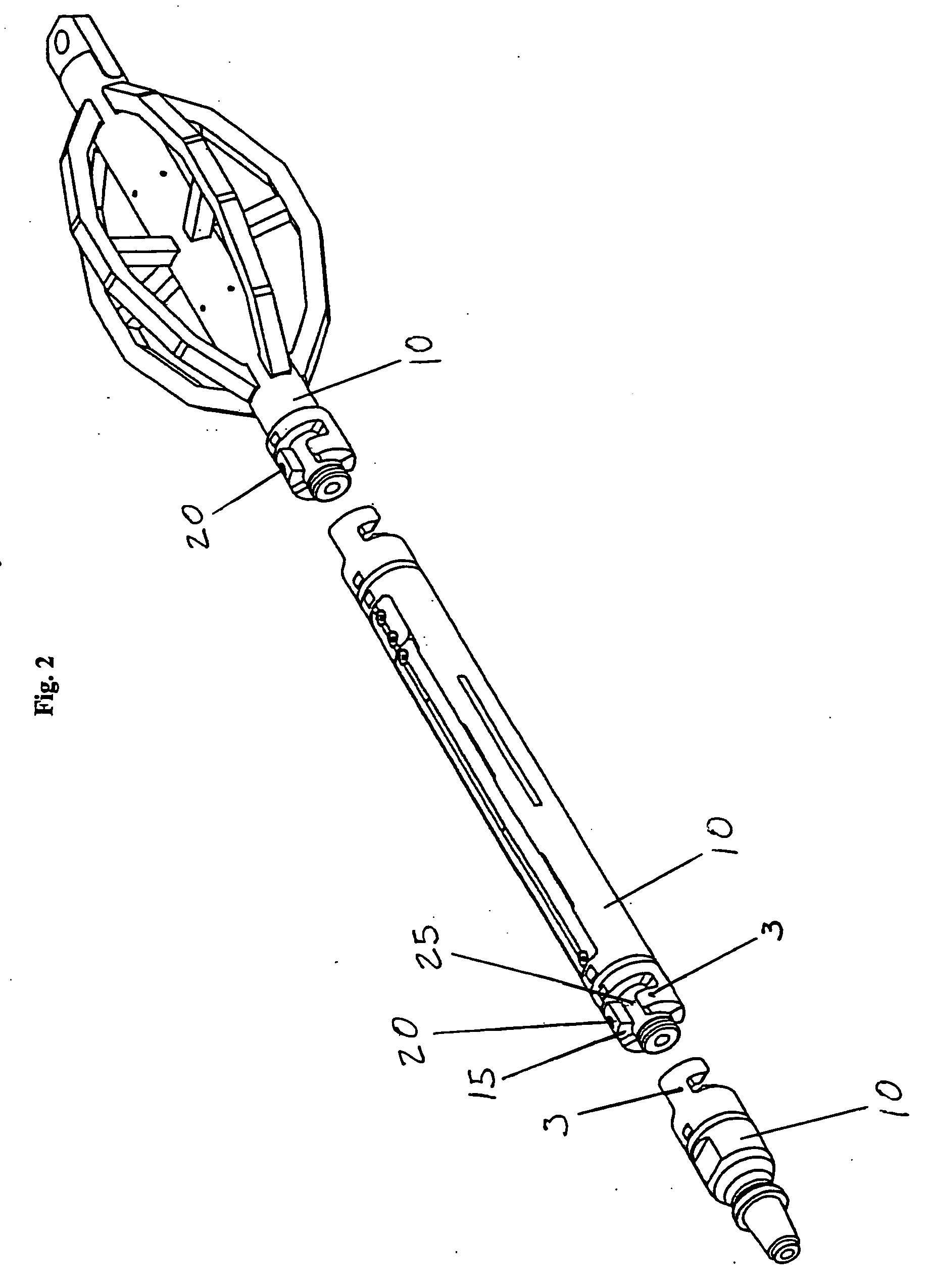Shaft coupler
a shaft and coupler technology, applied in the direction of couplings, fastening means, rod connections, etc., can solve the problems of large size and length of the coupler, difficulty in proper insertion and securing, and substantial amount of time taken to screw the couplers in place, etc., to achieve the effect of resistance to movemen
- Summary
- Abstract
- Description
- Claims
- Application Information
AI Technical Summary
Benefits of technology
Problems solved by technology
Method used
Image
Examples
Embodiment Construction
[0029] Referring to the drawings wherein like reference characters designate like or corresponding parts throughout the several views, and referring particularly to FIG. 1, it is seen that the coupler invention includes two coupler bodies 1. The coupler bodies 1 are each attached to the ends of separate shafts 10. An interior cylinder 25 extends past the end of the first coupler body. Each coupler body 1 has one or more flanges 3 that are in the general shape of an inverted “L.” Each flange has a rear vertical face 4, upper lateral face 5, extended vertical face 6, lower lateral face 7, and indented vertical face 8. The faces of the flange contact and mate with the complementary faces of the flange of the other coupling body.
[0030] To attach two shafts by use of the coupler, the user inserts the flanges of the coupler bodies into the void next to the one or more flanges of the other coupler body. The coupler bodies are then rotated until the extended vertical face 6 of each flange ...
PUM
 Login to View More
Login to View More Abstract
Description
Claims
Application Information
 Login to View More
Login to View More - R&D
- Intellectual Property
- Life Sciences
- Materials
- Tech Scout
- Unparalleled Data Quality
- Higher Quality Content
- 60% Fewer Hallucinations
Browse by: Latest US Patents, China's latest patents, Technical Efficacy Thesaurus, Application Domain, Technology Topic, Popular Technical Reports.
© 2025 PatSnap. All rights reserved.Legal|Privacy policy|Modern Slavery Act Transparency Statement|Sitemap|About US| Contact US: help@patsnap.com



